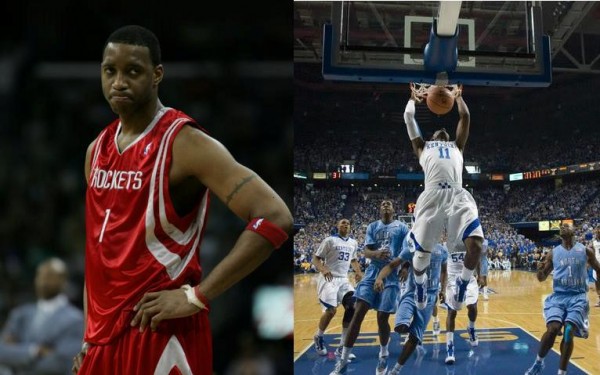Welcome, Dr. Emmert: Please Don’t Mess Up…
Posted by rtmsf on August 18th, 2010Yesterday on Seattle radio station KJR, NCAA president-elect Mark Emmert gave an interview with host Mitch Levy where he discussed his thoughts on some of the hot-button topics impacting collegiate sports. Dr. Emmert, who will assume his post on November 1 of this year, is currently the president of the University of Washington and the former Fulbright winner is widely recognized as one of the savviest up-and-comers in the world of academic administration. His rise up the ranks from an assistant professor (Northern Illinois) to Vice-Chancellor (Colorado) to Provost (Montana State) to Chancellor (UConn and LSU) to President at UW is impressive on its face, and his skill at political maneuvering and fund-raising should be obvious. The concern we have, however, in all situations where administrators move from an academic to an athletic environment is whether such a transition will be seamless — in other words, will that person “get it?” The danger in the application of ivory tower customs and norms to the world of athletics is that you can find yourself in troublesome spots if you haven’t gauged the environment correctly, such as when Emmert badly overreached in asking for public funding for a new Husky Stadium in the midst of a massive nationwide recession. While that example represents a single misstep in a career full of home runs, it gives us pause when taken in concert with the following quote he made on the KJR radio broadcast. In discussing the much-maligned one-and-done rule in college basketball, Emmert said:
I much prefer the baseball model, for example, that allows a young person if they want to go play professional baseball, they can do it right out of high school, but once they start college they’ve got to play for three years or until they’re 21. I like that a good deal. But what you have to also recognize is that rule isn’t an NCAA rule. That’s a rule of the NBA. And it’s not the NBA itself, but the NBA Players Association. So to change that rule will require me and others working with the NBA, working with the players association. We’ll be having those conversations, because I think it would be good for young people and good for basketball.
Before we get to our argument against this idea, let’s briefly touch on the reality of this proposition. You hear this frequently stated among coaches, fans and pundits, but what all of these folks fail to recognize is that the NBA wants nothing to do with this on either the management or the players’ side. Commissioner David Stern and his owners do not want untested teenagers who are virtually complete unknowns coming into their league because they are unmarketable, while players do not want untested teenagers who are virtually complete unknowns coming into their league because they take away veterans’ jobs. The NCAA acts as a veritable minor league for the NBA, providing a competitive environment to fully vet and scout players for at least a year before some 80-year old owner throws sixteen million dollars and the viable future of a franchise at them. Think of it this way — were Washington Wizards fans more excited about #1 pick Kwame Brown (who nobody outside of rural Georgia had ever seen play) or #1 pick John Wall (who was on national television about 4,000 times last year)? As a point of fact, the NBA powers-that-be seem more interested in extending the one-and-done rule by another year than rolling it back in any way. And why not? — it’s better for business.
Now, as to Emmert’s proposal itself, we’re going to explain why this is not a preferred option without regard for what the NBA wants or will agree to. The remainder of this post represents pure advocacy for the college game and the college game only. We see three compelling reasons that the NCAA should not bother to explore this MLB model possibility, as tempting as it sounds to an educator/administrator such as Emmert.
-
The NCAA Needs Marketable Stars Nearly as Much as the NBA Does. This is the dirty little secret of college basketball in the 21st century. The hardcore fans of the elite programs at Duke, Kansas, UCLA, Kentucky, North Carolina, Indiana, et al, aren’t going anywhere. These folks would watch their teams play if they suited up four skinny 12-year olds and a rented donkey. But the casual fan won’t. The casual fan wants to see star power, and he wants to learn who the next big basketball talents will be through the crucible of the best postseason in all of sports, the NCAA Tournament. When players like Derrick Rose, Kevin Durant, Kevin Love, John Wall and many others are on college campuses building considerable buzz throughout the season and heading into March, this collective must-see component to the game takes on a much different meaning than when the player names are instead Jameer Nelson, JJ Redick, Adam Morrison and Tayshaun Prince. All great collegians, but do you see the difference? Who does Mr. Office Drone/Bracketeer tune in to watch more readily? Furthermore, CBS/Turner Sports just signed a fourteen-year, $10.8B deal to broadcast the rights to the NCAA Tournament, in case you’d already forgotten, and there will be none-too-subtle pressure on the puppet-masters of the sport to ensure that the best possible product is placed on the floor. For the maximum amount of interest to take hold, that product without question must include the top 18- and 19-year old basketball players in the world.
-
When High School Seniors Make Their Decisions, Coaches Bear the Brunt of It. We talked about this back in June, and nothing has changed in the interim. We saw what happened to recruiting from 1995-2005 when coaches had to compete not only against rival schools for the talents of a player, but also the siren call of the NBA. Whether it was Kentucky and Tracy McGrady, Florida and Kwame Brown, Duke and Shaun Livingston, or North Carolina and JR Smith, the fans and (more directly) coaches of those programs where agonizingly forced to endure a late spring phone call to learn that, after many hours spent recruiting the player to their campuses, it was all for naught. And those were the elite players! Imagine the situations where the player was fully expected to go to college but still was lured away — Jackie Butler (Mississippi State), Ndubi Ebi (Arizona) and Louis Williams (Georgia) all come to mind. How does a coach go about finding a suitable replacement for a star recruit so late into the signing period? Short answer: he can’t. We certainly understand that it’s frustrating to a lot of people (coaches included) to have to lose a star player as a one-and-done, but to have spent the same amount of time recruiting him and not receive even a single season of his talents is far worse, isn’t it? That’s what would happen if the MLB model were implemented — recruiting would once again become a two-phase process.
-
For Better or Worse, NCAA Basketball is the NBA’s Minor League. It’s not the NBDL (although it has found a nice niche as a training ground for older players), and it’s not Europe (similarly). Rather, college basketball remains the NBA’s minor league, and where the MLB example fails is that college baseball is not. Each professional baseball franchise has several levels of minor league teams beneath it by which to develop its prospects, whether they come directly from high school or after three seasons of college. This is a HUGE difference. The reason is that, as Mark Stein notes in this article, the vast majority of prep-to-pros players during that ten-year period were nowhere near ready to impact the professional game on a regular basis, and there remains no true professional minor league in basketball available by which to develop them. NCAA hoops is it. The list of players who came right into the NBA and contributed immediately is much shorter (Dwight Howard, LeBron James) than the list of those who took a few years to develop (nearly everyone else, including superstars Kobe Bryant, Kevin Garnett, Jermaine O’Neal and Amare’ Stoudemire). If Mark Emmert is worried about the players (and his quote above seems to imply that he is), then he needs to push for an environment that will foster player development for the next level, in much the same way as he would inspire any student with soaring dreams. This tact dovetails nicely with what we described above that college basketball should be selling — Watch the greatest sporting spectacle on earth — the NCAA Tournament — where the stars of tomorrow are on stage today.
We obviously recognize that there are no easy answers here. Any model implemented will have someone complaining. But beginning in November, it will be the obligation of Emmert to push the game of college basketball forward in popularity and interest. After all, NCAA Tournament dollars fund nearly the entire operation there in Indianapolis. The way to do this is not to push college hoops down a path that makes it even more like college baseball, a sport that nobody cares about in large part because there is no direct connection between those players and the pros; but instead, Emmert should work with the NBA to pursue a model more like college football, an incredibly popular sport where everyone knows that today’s Heisman Trophy candidates are tomorrow’s NFL all-Pros.












































